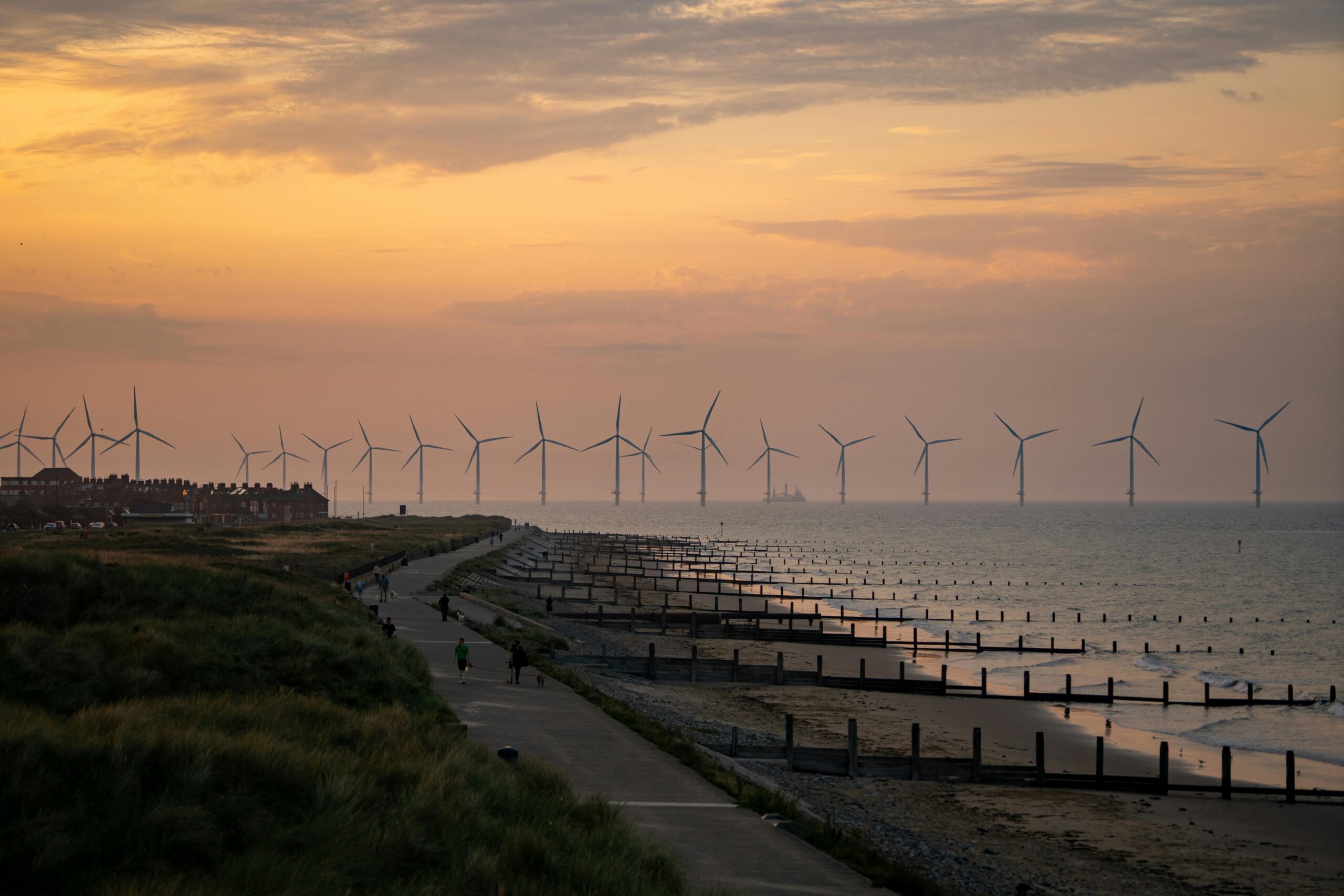The UK has positioned itself as a global leader in offshore wind, setting a target of 50 GW capacity by 2030 as part of its legally binding net-zero commitment for 2050. Offshore wind alone is expected to generate enough electricity to power every UK home by the end of the decade. Yet this ambition faces a significant challenge: the critical shortage of skilled workers. With tighter immigration rules, higher salary thresholds, and stricter qualification requirements, the UK risks missing its net-zero target commitment.
A growing skills gap in the UK wind industry
The scale of demand for skilled professionals in the wind sector is already outpacing supply. According to the Offshore Wind Industry Council (OWIC), the offshore wind workforce has grown from just over 32,000 two years ago to nearly 40,000 today, representing a 24% increase as of 2025, and is expected to grow to over 100,000 by 2030. RenewableUK estimates that 70,000 to 95,000 new workers will be required in just five years, covering engineering, project management, health and safety, and specialist technical roles such as turbine technicians. RenewableUK’s Deputy Chief Executive, Jane Cooker, remarked that “onshore and offshore wind employment is set to increase well beyond the 55,000 workers currently employed.” However, she also highlighted the looming skills gap that the sector needs to address through recruitment and training
At the same time, the Energy & Utility Skills Partnership estimates that nearly 27% of the current energy workforce — largely from the baby boomer generation — will retire by 2030. This demographic shift will create a significant gap, with the industry needing to fill 277,000 vacancies. The combination of increasing demand and a shrinking workforce is creating a significant labor shortage, coinciding with the UK’s need for rapid sector expansion
The impact of restrictive immigration policies
The UK government’s Restoring Control Over the Immigration System white paper, published on 12 May 2025, proposes significant changes aimed at reducing immigration, particularly in areas where the country faces growing skills shortages. These changes include making it harder for employers to recruit from abroad, especially for roles deemed medium-skilled (RQF levels 3-5), such as Wind Turbine Technician (Level 3), Environmental Scientist (Level 4/5), or Energy Project Manager or Environmental Engineer (Level 5), unless industry sectors can demonstrate substantial efforts to recruit domestically. For the wind industry, which requires a mix of highly technical and vocational skills, these changes are particularly concerning.
In addition, the minimum salary for most new skilled worker visas has been raised to £41,700, with even higher salary thresholds for certain roles. The policy also restricts sponsorship to graduate-level positions (RQF 6+), meaning that most non-graduate roles are no longer eligible for sponsorship. A limited number of exceptions may be made under the Temporary Shortage List (TSL), but this list is set to expire by 31 December 2026 unless the Migration Advisory Committee (MAC) extends it. These policies effectively close the door to a significant pool of international talent at the precise moment it is most needed.
How other countries are competing for clean energy talent
The UK’s restrictive stance stands in sharp contrast to strategies adopted by peer economies. The EU has placed renewable energy and engineering on its shortage occupation lists, lowering salary thresholds and easing visa rules through the EU Blue Card. Germany has gone further, streamlining procedures to attract global talent for clean energy. Canada, through its Express Entry system, gives high rankings to applicants with renewable and engineering expertise, actively marketing these opportunities to international workers. Australia, meanwhile, has placed clean energy professionals on its Priority Migration Skilled Occupation List, creating clear pathways for both technicians and engineers. Together, these approaches underline a pro-growth stance. Countries with open migration pathways are positioning themselves to meet rising demand in clean energy, while more restrictive regimes risk losing the global race for talent. In effect, while the UK raises barriers, competitors are lowering them, making it more attractive for skilled workers to move elsewhere.
The risks of inaction
Leaving the skills gap unresolved risks undermining future growth and stability. Offshore wind projects, already facing bottlenecks in permitting and grid connections, will experience further delays due to labour shortages. This scarcity of skilled workers will drive up wages, inflating project costs and ultimately increasing energy bills. Missing workforce targets will lead to missed capacity targets, hindering the UK’s ability to meet its 2030 offshore wind goal and undermining its broader net zero pathway.
What can employers do now?
While immigration policy is ultimately shaped by the government, employers in the wind industry have a crucial role to play in navigating its impact.
Engage with policymakers: Industry bodies and employers should actively engage with the UK government to advocate for policy reforms that will allow the offshore wind sector to access a wider pool of talent. This includes revisiting the salary thresholds and RQF Level 6 (renewable energy analysts, sustainability consultants, energy managers, and renewable energy engineers positions) minimum requirements for skilled worker visas.
Conduct workforce audits: Employers should begin by conducting thorough workforce audits to assess their current and future talent needs. By aligning these needs with project pipelines, businesses can identify potential skill shortages before they arise. This proactive approach allows companies to plan effectively, ensuring they have the right people in place at the right time.
Invest in training and apprenticeships: Employers should ramp up investment in domestic training programmes and apprenticeships to build a long-term talent pipeline. Collaborating with universities and vocational training providers can help create a more sustainable workforce.
Develop dual-talent pipelines: To ensure the sector meets both short- and long-term needs, employers should build a blend of domestic talent and international workers. This dual approach can help mitigate immediate labour shortages while developing homegrown expertise for the future. At EnableGreen, we assist companies in attracting both local and global talent, ensuring they can navigate the challenges of a fast-evolving industry
Focus on retention and upskilling: Retaining skilled workers and investing in their continuous development is crucial. Offering career progression opportunities and upskilling initiatives will help maintain a stable workforce and reduce reliance on external talent.
Immigration as a cornerstone of net-zero delivery
The UK’s net zero ambition is bold and achievable, but only if underpinned by the right workforce. Immigration plays a crucial role in the successful development of offshore wind and the broader green transition. If the UK does not adjust its approach, it risks losing both talent and investment to countries with more pragmatic, future-focused policies.
Net zero goes beyond setting targets and advancing technologies; it fundamentally depends on the people driving these efforts. Without decisive action to align immigration policy with energy strategy, the UK could find its most important climate goal slipping out of reach.
To ensure your company has the talent needed to meet net zero goals, contact EnableGreen today to discuss how we can support your recruitment strategy.
Ready to advance your career in the green energy sector? Explore exciting offshore wind opportunities with EnableGreen and take the next step in your sustainability career


